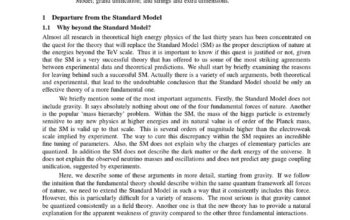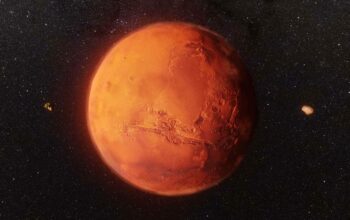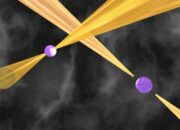Black holes, those enigmatic celestial entities, occupy a unique niche in modern astrophysics. Their extraordinary gravitational pull casts a shadow over our understanding of the universe. Contrarily, our sun is perceived as a bastion of warmth and vitality. However, recent explorations in astrophysics reveal a plethora of unexpected similarities between these two astrological phenomena. This prompts a thought-provoking inquiry: could it be that black holes mimic the sun in some fundamental aspects? This intriguing notion begs further examination, inviting challenges to our preconceived notions of cosmological behavior.
To embark upon this inquiry, it is essential to delineate what fundamentally distinguishes black holes from stars, particularly the sun. A black hole, characterized by its event horizon, emerges when a massive star exhausts its nuclear fuel and undergoes gravitational collapse. This process results in an object with density so high that not even light can escape its grasp. Conversely, the sun generates energy through nuclear fusion in its core, producing the light and warmth that sustain life on Earth.
Yet, despite their stark differences, both black holes and the sun exhibit common characteristics worth exploring. One noteworthy similarity lies in their gravitational influence. Both bodies possess immense gravitational fields, capable of influencing surrounding celestial objects. In the sun’s case, its immense gravity governs the orbits of planets, comets, and asteroids. Similarly, black holes exert gravitational forces that can manipulate the trajectories of nearby stars and interstellar gas, often leading to astonishing cosmic phenomena, such as gravitational lensing.
Moreover, both entities serve as significant players in the dynamics of their respective environments. The sun, at the center of our solar system, affects conditions on Earth, contributing to climate patterns and the stability of life. In contrast, a black hole can dictate the behavior of nearby matter, turning it into an accretion disk. This configuration emits radiant energy, producing highly energetic jets and X-ray emissions detectable from vast distances. This dual nature of both the sun and black holes as gravitational titans generates substantial waves within their cosmic domains.
Further delving into the question of mimicry, we may examine the spectral emissions from both the sun and black holes. While black holes themselves do not emit light, their energetic interactions can result in observable phenomena. The surrounding accretion disk and relativistic jets can produce electromagnetic radiation across the spectrum. Interestingly, the sun emits a wide range of electromagnetic radiation as well, including visible light, ultraviolet, and infrared radiation. The resulting similarities in the emission spectra from these distant entities raise the question: could the energetic processes surrounding black holes find an analogy in the solar processes of fusion?
Additionally, one may consider the life cycle of a black hole and how it parallels that of stellar bodies like the sun. Stars undergo evolutionary phases, transitioning from main sequence to red giant and eventually culminating in either a supernova or a gradual fade into a white dwarf state. While black holes originate from the remnants of mass-laden stars, their existences can be temporally cyclical in terms of their interaction with surrounding matter. Over time, black holes can consume nearby stars, leading to the occasional resurgence of stellar formation in their vicinity. This cyclical nature mirrors aspects of the sun’s lifecycle, wherein stellar remnants give birth to new stars from primordial materials under specific conditions.
Nevertheless, these parallels may provoke resistance from traditionalist perspectives within astrophysics. Critics may posit that despite superficial similarities, the fundamental mechanisms underlying the two phenomena remain irreconcilably distinct. The sun’s reliance on nuclear fusion contrasts sharply with the gravitational collapse of black holes. This contention warrants further scrutiny, especially as new findings emerge from the realm of observational astrophysics. Enhanced instruments and technology have begun to illuminate previously hidden aspects of cosmic evolution.
Moreover, the inquiry into the mimicry between black holes and the sun transcends mere rhetorical exploration; it also poses profound implications for our understanding of astrophysical phenomena. For instance, if we accept that black holes can exhibit behavior analogous to stellar processes, does this suggest a potential pathway for black holes to contribute to cosmic evolution in ways not previously appreciated? This challenge to conventional wisdom compels astrophysicists to reevaluate models of stellar formation and the potential role of black holes in that delicate dance of energy and matter.
In addition, the implications extend beyond the cosmic theater. The parallels between these celestial bodies may serve as a metaphor for unifying seemingly disparate scientific disciplines. Understanding how two entities such as black holes and the sun can exhibit similar characteristics encourages interdisciplinary collaboration, merging astrophysics, theoretical physics, and even philosophical inquiry into the nature of existence.
In conclusion, the proposition that black holes may mimic the sun invites a playful yet serious examination of astrophysical concepts. While stark differences undoubtedly exist, the uncovering of similarities prompts an exploration into the dynamics of celestial mechanics and signals a shift in how we might perceive the cosmos. The challenge presented by these findings urges a reconceptualization of astrophysical models and encourages a broader synthesis of knowledge across scientific disciplines. Thus, in the quest for understanding, it becomes increasingly vital to ask provocative questions and to navigate the complex terrain that interconnects phenomena as divergent as the sun and black holes.












